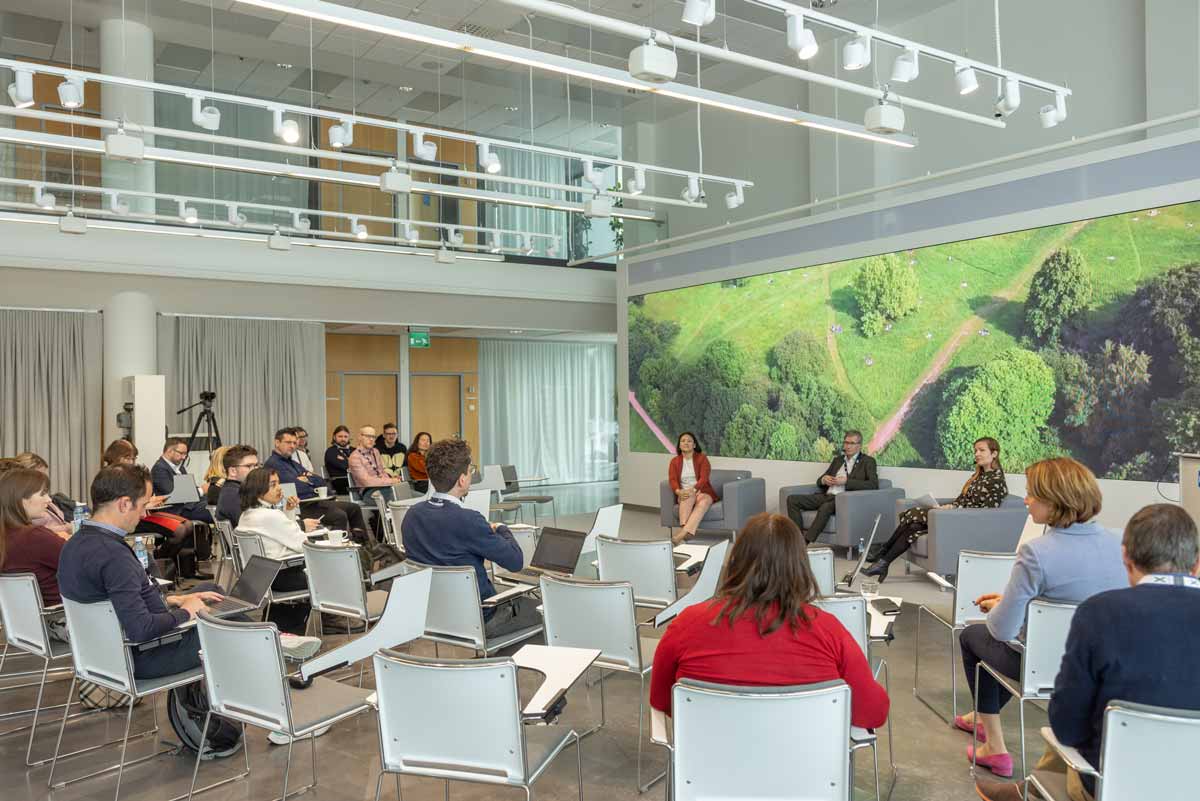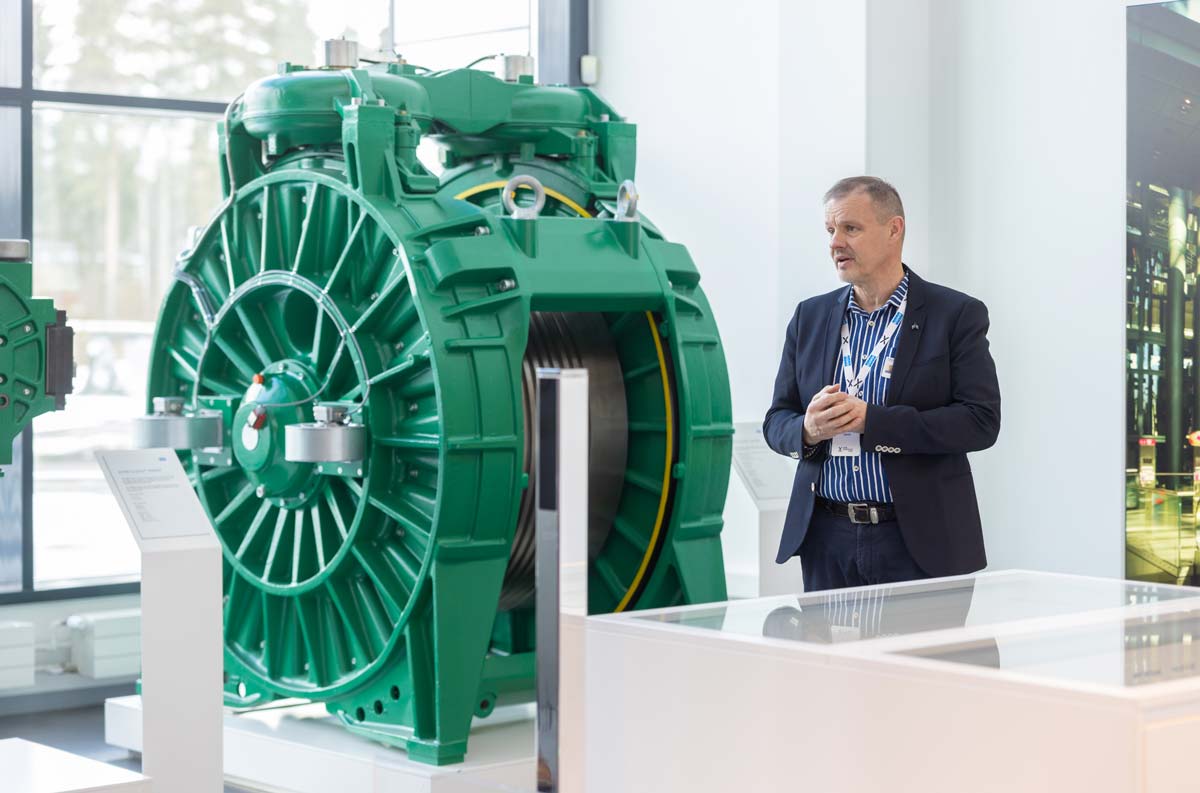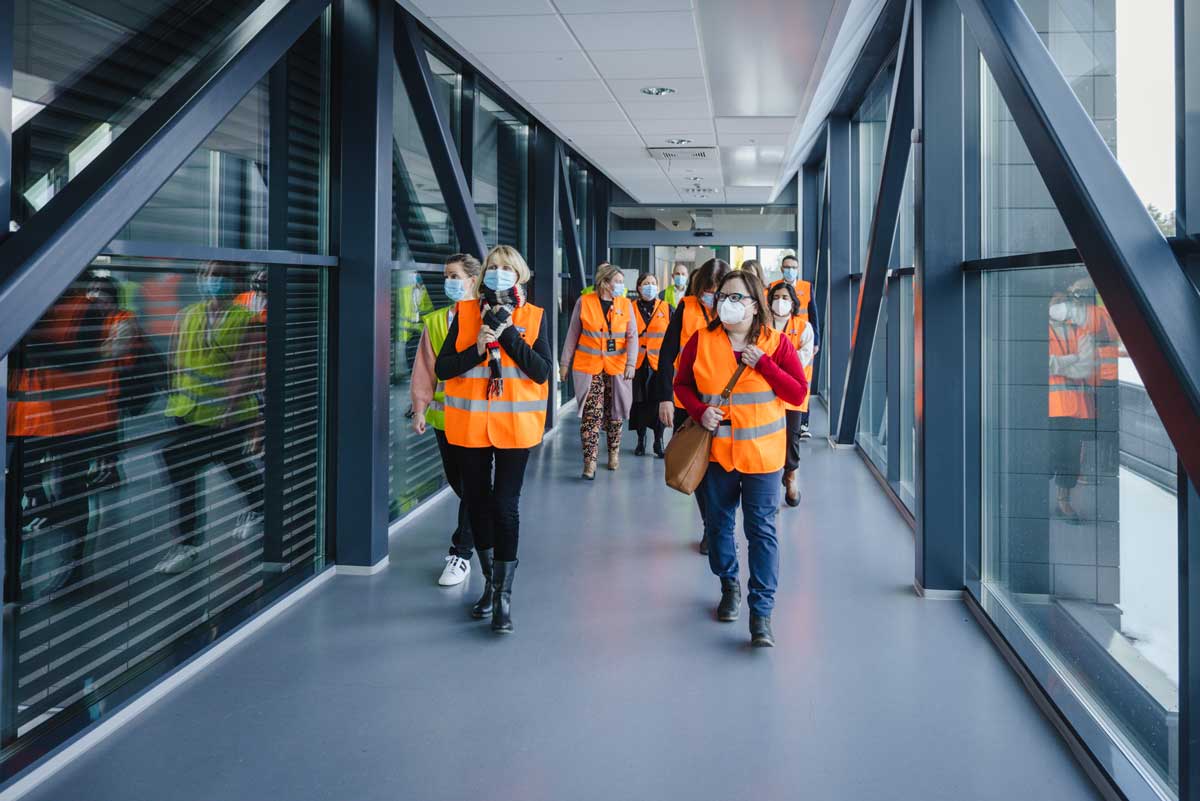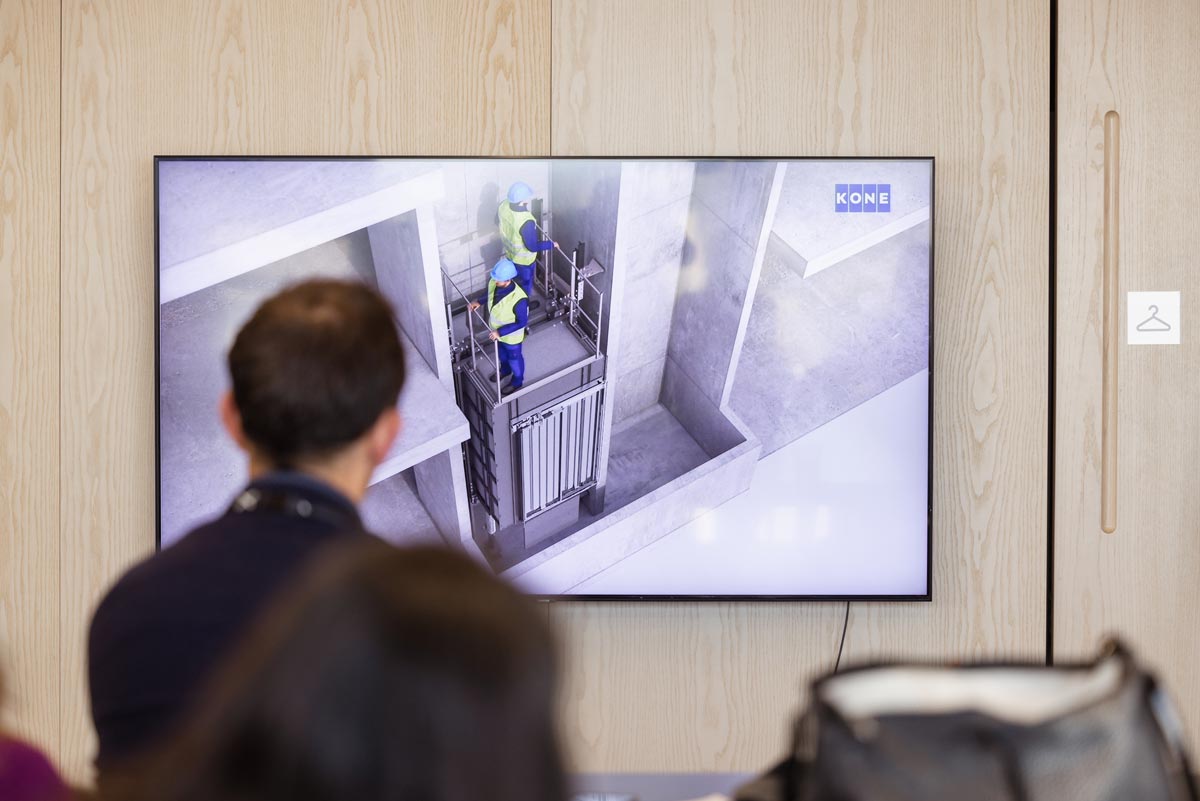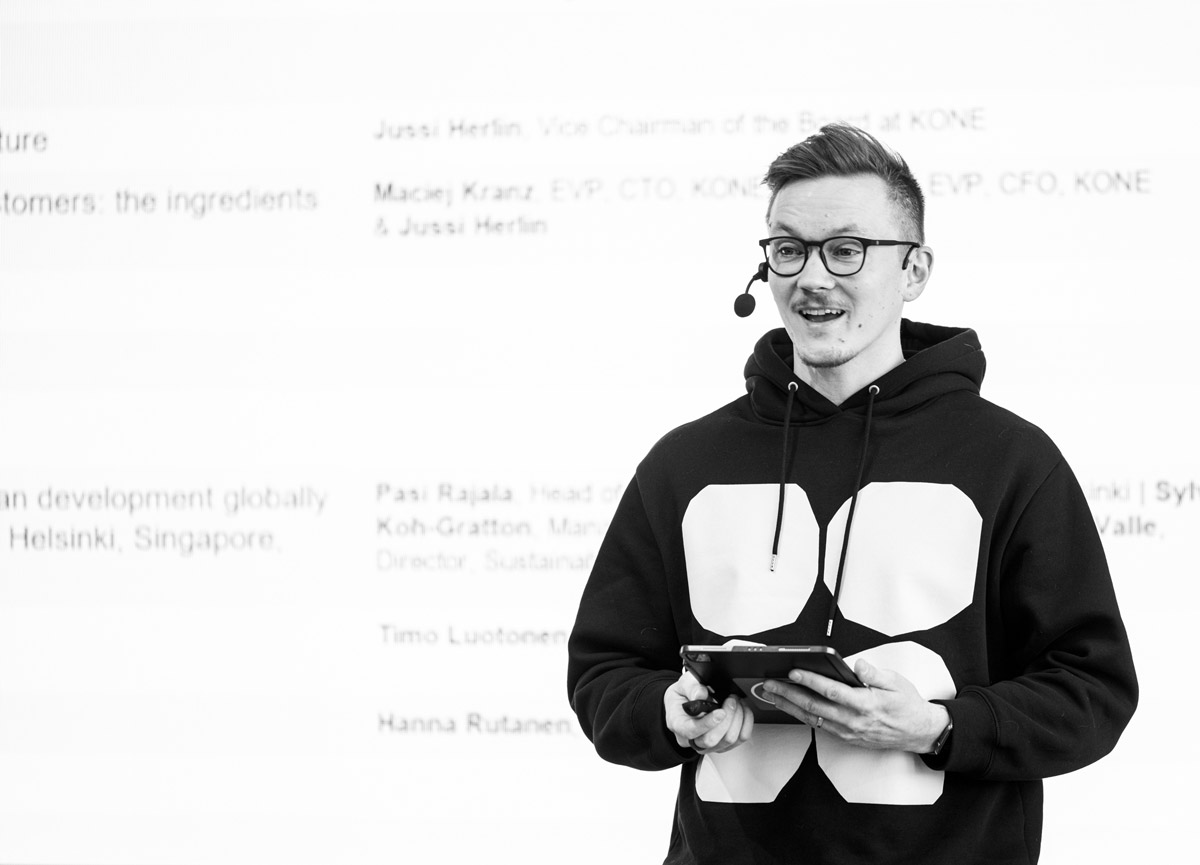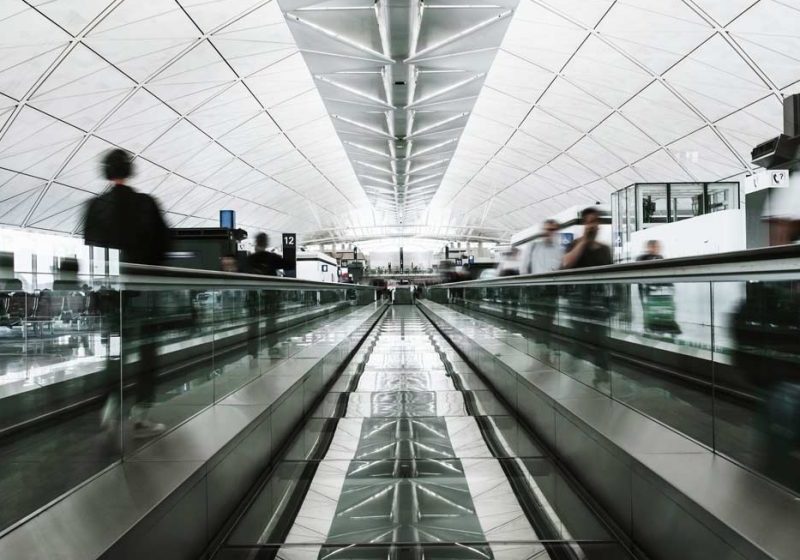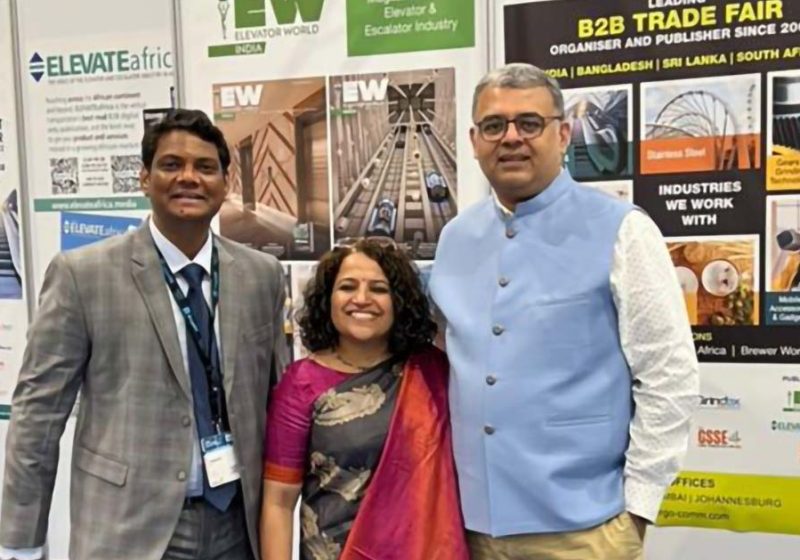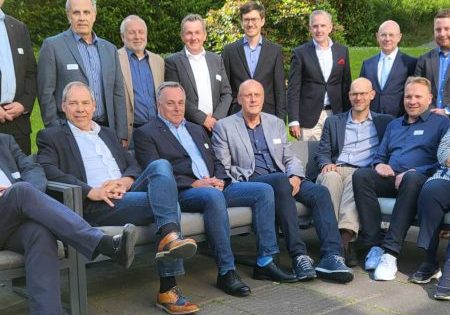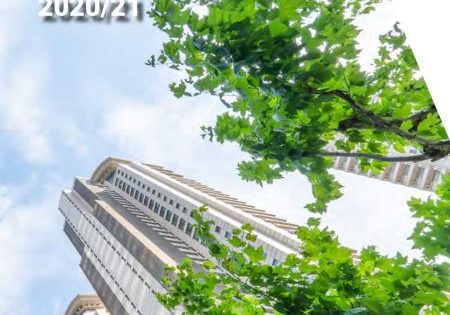Transformation Roadmap
Aug 6, 2022
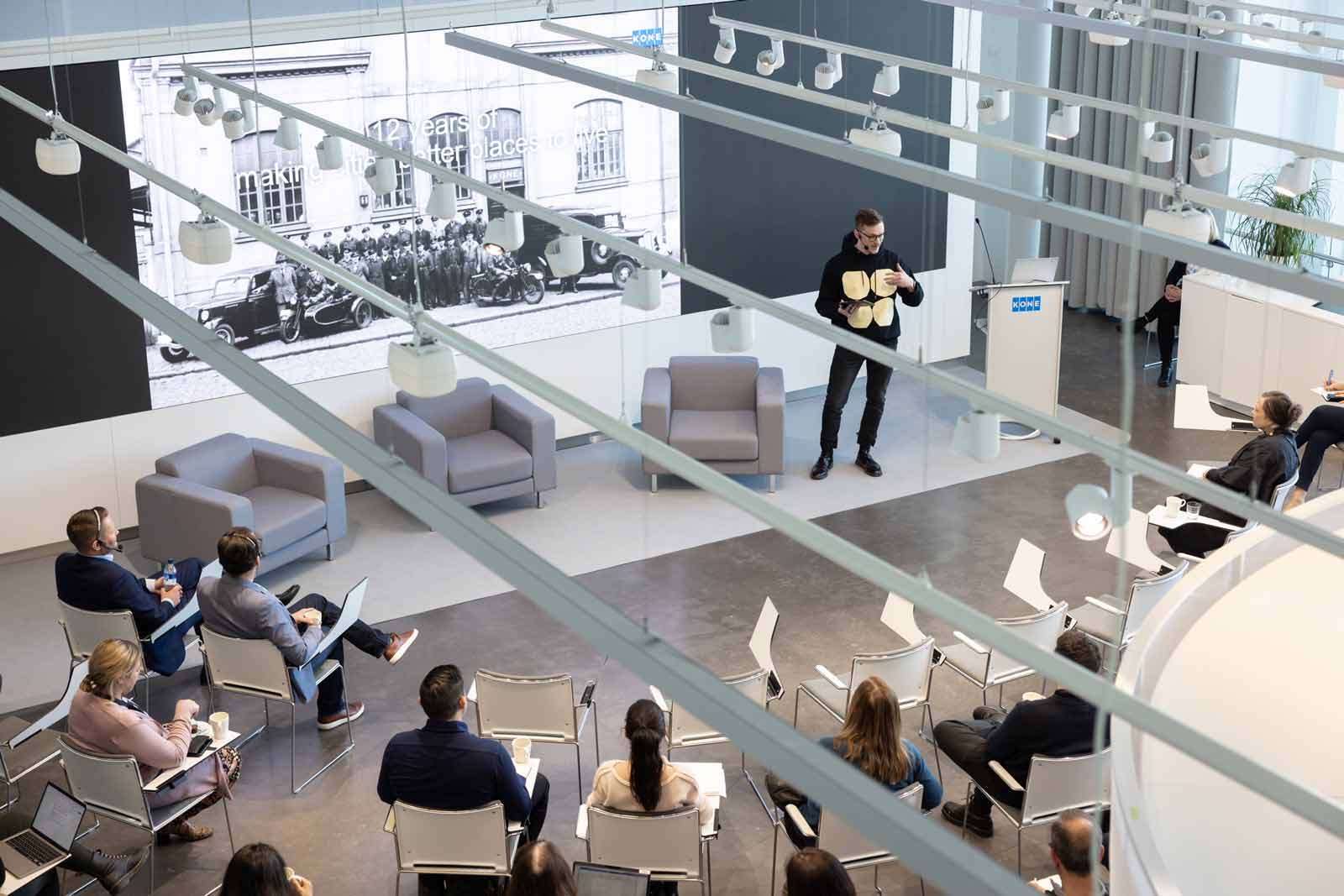
Inaugural KONE Experience explores how technology facilitates sustainability, productivity and an improved VT user experience.
photos courtesy of KONE
On March 30-April 1, KONE hosted approximately 50 journalists from around the world in Helsinki and Hyvinkää, Finland, for the inaugural KONE Experience, a two-day event organized in partnership with the City of Helsinki that centered around how to build happier, smarter and more sustainable cities and how VT can play a big role. The in-person event included panel discussions at a high rise in Helsinki and a tour of the KONE factory and showroom in Hyvinkää, as well as the option for journalists to visit the underground high-rise test laboratory in Lohja (ELEVATOR WORLD June 2018) the next day. Due to current world events, your author did not attend. However, she took part in the North America virtual version and enjoyed listening to experts from KONE and its business partners speak about how to achieve smart and sustainable cities, greater productivity and an enhanced vertical-transportation (VT) user experience. Their focus was on how new and emerging technology enables this. Different experts hosted and spoke at the in-person event. Panelists shared success stories from London; San Francisco; Hackensack, New Jersey; Singapore; and India, where KONE is partnering with Jetbrain Robotics to enable service robots to communicate with KONE DX Class elevators to navigate the Silver Streak Multi Specialty Hospital in New Gurgaon. Some robots identify, match and distribute medication to patients, while others take care of daily disinfection, explained Ajay Vishnu, chief technology officer at Jetbrain, a Solaris company.
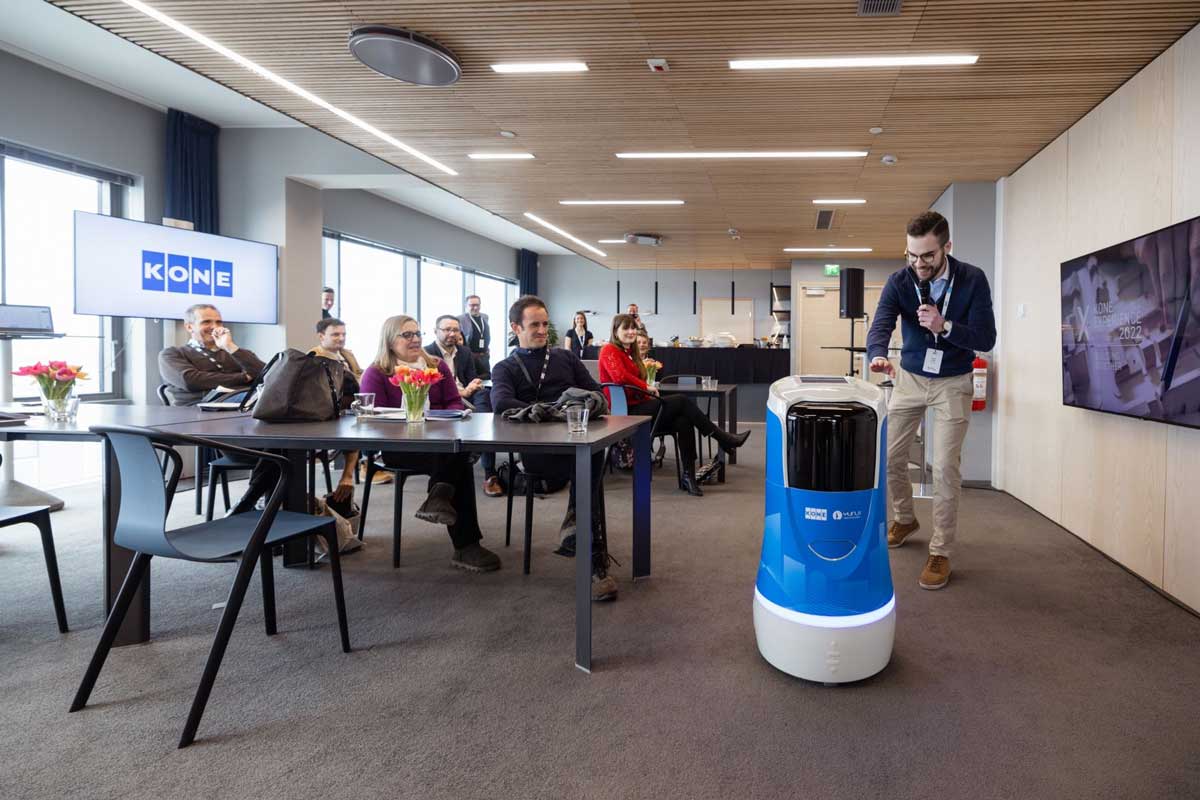
Smart Services and Digital Cities
In introducing Vishnu as part of the Smart Services and Digital Cities segment toward the end of the event, KONE Maintenance Business Digital Services Director Emilia Taskinen said:
“At KONE, we believe that technology is an enabler that can help solve problems and grasp opportunities for people’s everyday lives that are very tangible. For example, with KONE 24/7 Connected Services, we see higher customer satisfaction. Our digital services help our customers be more successful. We’ve already launched connected elevators, combining connectivity and easy-to-activate services.
“Elevators and escalators can become a critical part of wider, smart ecosystems within cities. Using application programming interfaces, or APIs, smart building solutions and elevators can be easily connected. We can link elevators to customize existing building systems, to service robots operating in a building or to applications that help people with disabilities, to name a few. With digital services, we can give rise to a new era of elevator music and information-sharing with building users. With our platform approach and DX Class elevators, combined with our digital platform, we create upgradability unlike anything else in the industry.”
“We can link elevators to customize existing building systems, to service robots operating in a building or to applications that help people with disabilities, to name a few.”
— KONE Maintenance Business Digital Services Director Emilia Taskinen
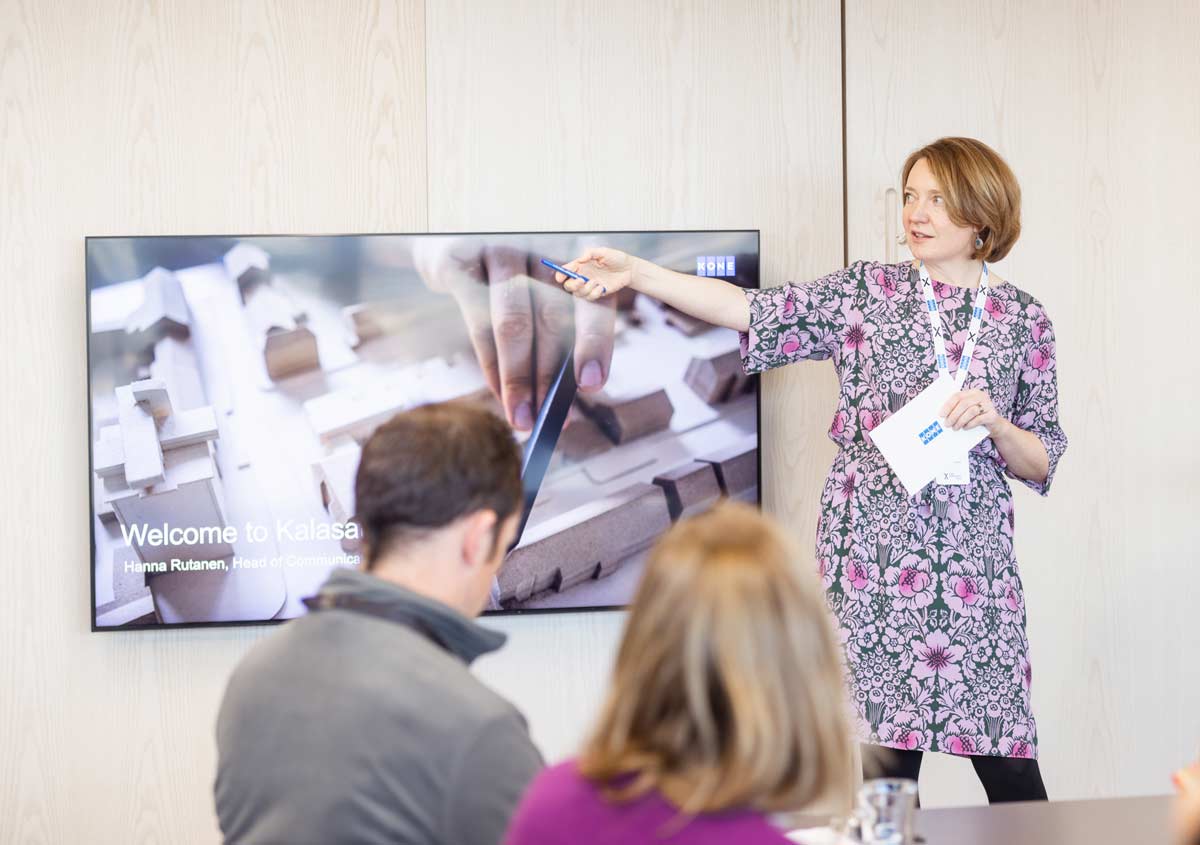
Service robots integrated with KONE DX Class elevators served appetizers to in-person guests gathered in the penthouse of Majakka, at 35 stories and 134 m the tallest building in Finland and part of Helsinki’s REDI mixed-use development, the country’s largest construction project (EW, July 2017). Meanwhile, KONE CEO Henrik Ehrnrooth welcomed guests to the North America virtual event, hosted by motivational speaker Kamilla Sultanova. Ehrnrooth was relegated to virtual-only participation, explaining to attendees that he had tested positive for COVID-19. He remarked on the war in Europe, describing it as “the atrocious attack by Russia on Ukraine,” and pointed to challenges including supply chain issues, rising materials costs, high inflation and the tense geopolitical climate. Standing in front of a white background with a colorful virtual city of skyscrapers in the foreground, Ehrnrooth said:
“All of these are impacting businesses. However, today we are focusing on opportunities, and I think there are huge opportunities. This is what the KONE Experience is all about. At KONE, we want to continue to be at the forefront of innovation. We have launched many groundbreaking solutions over the past few years, and all have been developed together with our customers. Here, I think about our 24/7 Connected Services and our DX Class of elevators (EW February 2020 and August 2020) that are bringing new experiences to our customers and users around the world.”
Ehrnrooth said KONE innovates to help its customers meet the challenges of urban life. The event, he said, is about how KONE, its partners and customers can navigate and build the future together. “The needs of our customers continue to change,” he said. “In a changing environment, adaptability is key.”
In addition to sustainability, sessions centered around productivity in construction and an improved user experience. “The whole industry needs to co-create and innovate together to resolve challenges on the city level, the neighborhood level and on the building level,” Ehrnrooth said.
“The whole industry needs to co-create and innovate together to resolve challenges on the city level, the neighborhood level and the building level.”
— KONE CEO Henrik Ehrnrooth
Sustainability
Sultanova introduced the first session leader, Greg Clark, group advisor on Future Cities and New Industries for HSBC. The sustainability panel featured Matt Gough, innovation director at London-based construction company Mace Group Ltd.; Thomas Heatherwick, designer and founder of London-based Heatherwick Studio; and Professor Cheong Koon Hean, chair of the Centre for Livable Cities and chair of the Lee Kuan Yew Centre for Innovative Cities in Singapore.
Clark said the panel would focus on three topics:
- Change happening in cities
- Whether society can afford to effect change
- What makes change work
Koon Hean said people movement and rapid urbanization put pressure on cities to provide adequate housing and infrastructure and, in turn, a good quality of life. The pandemic and the global climate crisis, meanwhile, highlight the importance of health and wellness, she said. “Cities need to be more sustainable and resilient,” she continued. “We hear a lot of buzzwords like ‘decarbonization’ and ‘net zero,’ but we all need to understand what these buzzwords really mean.”
Key change drivers are technology and rising inequity, Koon Hean observed. Cities are becoming increasingly dependent on technology, a situation exacerbated by the pandemic. Rising inequality, she said, stems from skills gaps and the digital divide, which was also thrust into the spotlight by the pandemic.
Heatherwick continued on the topic with an impassioned plea for governments and others involved in construction to “make buildings human again.” Heatherwick said:
“Governments lost their confidence to make buildings and cities with personality, so these buildings have become sterile and emotionless. Whether you’re in Asia, the Arctic Circle or Europe, many buildings look the same. A visual complexity is necessary to make something human and engage our interest.”
Gough applauded Heatherwick’s take on capitalism and the need for a social conscience in cities. A main driver of change, according to Hough, is population growth. By 2050, there will be nearly 10 billion people on the planet, and 3 billion will be added in the next 20 years. Seventy percent of those people, he said, will gravitate toward cities. “To accommodate this growth, we need to build a lot of new buildings and infrastructure,” Gough said. “But we need to design, construct and maintain these structures responsibly.”
In response to the question of whether we can afford this, Gough asked, “Can we afford not to?” That said, the paradigm is shifting away from dismissing costly, climate-friendly ideas toward recognizing the ultimate cost of not doing so. Gough said:
“It’s now cheaper to leverage debt or get credit if you have good green credentials. In cities, people are drawn to better-performing buildings in light of a better outcome for the climate. So [green building] is becoming more realistic to fund. Still, there is a price to pay for using advanced materials or, say, hydrogen fuels on construction sites rather than traditional diesel. What we’re watching now is whether governments globally will invest in these new technologies and fuels to help drive change.”
Clark told Koon Hean that Singapore is considered an innovator in green urbanization and asked her to explain how such construction can be made affordable. She said that, when considering expense, it’s important to take the long view. “It’s not going to happen overnight,” she said. “It takes years.”
Koon Hean observed that government plays a pivotal role in effecting change, but, because of limited resources, a roadmap that prioritizes resources must be created. She said:
“I’ve been in public service, and I know how government can move the needle, because it is a big buyer and procurer. As an example, let’s say government is going to introduce a carbon tax. This tax is going to be quite painful, so we give people plenty of time to transition. The price of carbon will go up progressively, from about US$5 dollars a ton today to about US$50 to US$80 dollars a ton in 2030. Making the transition as pain-free as possible will require governments working with industry and public/private partnerships and providing help for companies.”
Heatherwick said building green should not be the only concern: In times of crisis, he said, “1,000-year thinking” is necessary to ensure that buildings are not simply “green,” but also attractive and mindful of the “human premium,” like the great cathedrals and “humble homes” of centuries gone by.
The U.K., Gough said, is among those witnessing a continual influx of rapidly accelerating technology. More data is being captured to improve spaces’ performance. But, he said, there has been somewhat of a pushback against technology just for the sake of monetary gains and convenience. “We have to use technology responsibly, so it’s focused on really improving the experience of a place, which goes back to Thomas’ point about human needs,” Gough said.
With a foliage-covered digital skyscraper in the foreground and the words “Building Together to Reach Zero” above, Sultanova then introduced KONE Head of Global Offering, Maintenance Business Anna Wäck to talk about how green credentials can make a lasting contribution to better cities. Wäck then introduced William Whitfield, general manager of developer Shorenstein, to illustrate how mindful modernization can pay it forward sustainability-wise with a case study about San Francisco’s 31-story Russ Building, built in 1927.
The building is served by 16 elevators that are all being modernized by KONE to improve reliability, passenger comfort and eco-efficiency. In addition to energy-efficient VT, the Russ Building’s power all comes from low-carbon sources such as solar panels, Whitfield observed. “San Francisco is a leader in many of the aspects of sustainability,” he said. “If you are modernizing a building in San Francisco, you had better be on board.”
Wäck said that KONE has set ambitious carbon targets for itself, with the commitment to become carbon neutral by 2030. She then announced that KONE now offers the industry’s first carbon neutral elevators and carbon-neutral maintenance contracts for the DX Class. She said:
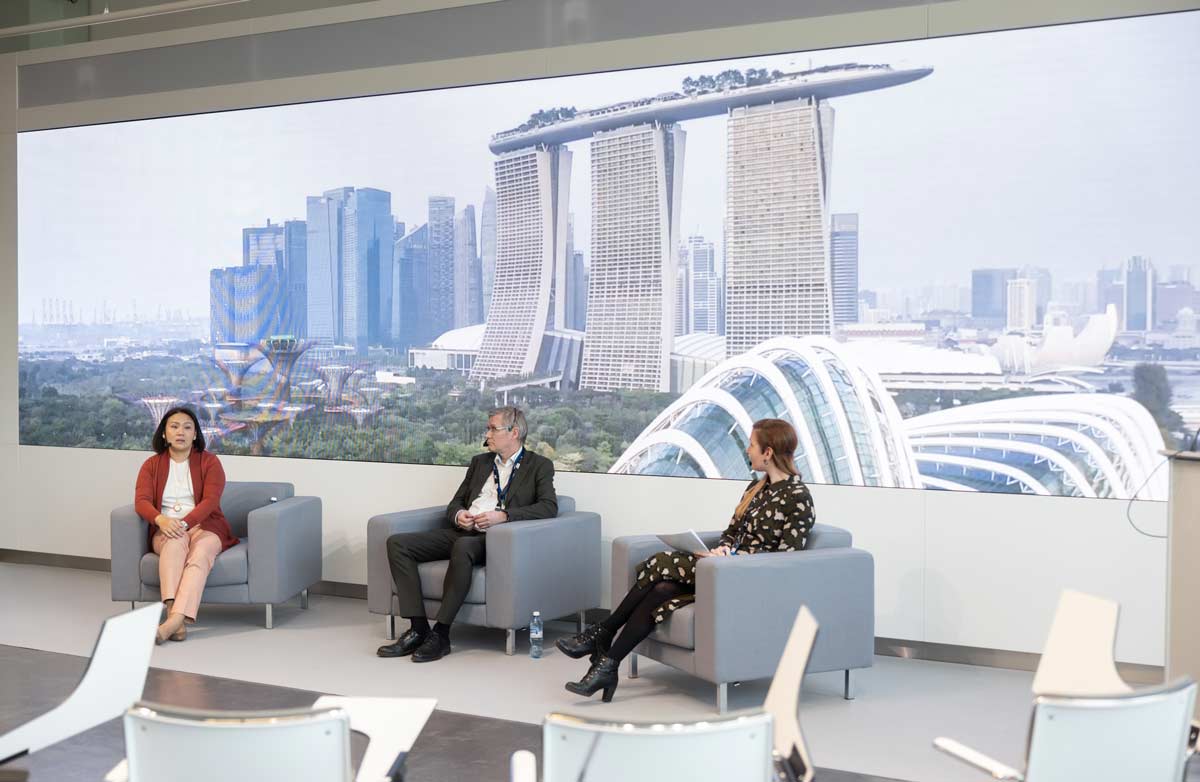
“We are doing this through supporting selected (LEED) Gold standard certified carbon offset projects around the world. This will start with selected elevator platforms for the European markets, gradually expanding to all of our markets worldwide.”
“Governments lost their confidence to make buildings and cities with personality, so these buildings have become sterile and emotionless.”
— Thomas Heatherwick, designer and founder of London-based Heatherwick Studio
KONE makes its products and services carbon neutral through a three-step approach, Wäck said. First, the company measures climate impact by calculating the carbon emissions of its equipment and services. Second, it adheres to “clearly defined” emissions protocol related to materials, manufacturing and logistics. Finally, to reach carbon neutrality, it compensates for the remainder of emissions. “KONE’s approach to sustainability represents what is good for people, business and society at large,” Wäck said, as video showing factory operations and moving elevators played in the background.
Productivity
In introducing the next segment on productivity, Sultanova said that she was surprised to learn that the construction industry lags in productivity growth. Despite the development of new processes, the annual productivity growth increase in the last 20 years for the construction industry has hovered at around 1%, she observed. Further, studies show that 70% of construction workers’ time is wasted on job sites. Virtual participants were asked to take part in a poll about the biggest productivity challenges. The segment featured Fred Mills, founder and managing director of the B1M video channel and Sascha Brozek, KONE vice president of Major Projects.
Top Productivity Challenges, Poll Results
Materials costs: 34%
Supply chain bottlenecks: 40%
Worker shortage: 26%
Mills laid out the challenges being faced by the construction sector, including the shortage of skilled workers and materials, and asked Brozek what productivity means to him. Brozek observed it is a broad topic traditionally defined as the ratio between input and output to produce a unit. Productivity, he said, encompasses labor, materials flow, sustainability and even CO2 footprint.
The fact the automotive industry involves essentially producing the same thing over and over has led to higher productivity gains of up to 4% over the past 20 years, Brozek said, versus construction. Mills observed that in construction, “We’re creating bespoke buildings every time,” and wondered if modular construction and component standardization could be part of the solution. He asked Brozek what he is seeing in major projects to improve productivity.
Brozek said digital design has been around for maybe 50 years, but has really picked up steam in the past 20 years to become an important means of improving productivity. “We have learned that 1 Leadenhall (an approved 36-story skyscraper next to London’s Leadenhall Market for which KONE is providing the VT) was digitally built more than 40 times to reduce redundancies and improve workflow,” Brozek said. This type of digital diligence is a great example of how technology can assist in realizing large, complex projects, he added.
Mills asked Brozek what advice he would give to people seeking to “get stuff done, make a difference and be more productive overall.” Brozek responded:
“I think it doesn’t depend so much on the size of the project. Obviously, the bigger the project, the bigger the challenges. But even smaller projects, let’s say a residential, four- or five-story building, have their unique challenges in terms of time, quality and, most importantly, cost. There are often unforeseen challenges that might delay construction. At KONE, we believe in early engagement. Our partners and customers work very closely with not only us, but also other trades early on to build a project team and engage throughout the course of the project to resolve problems jointly.”
Collaboration, Brozek said, is crucial to success. He illustrated this by pointing out that elevators cannot be installed without a shaft and electricity, so every trade doing its part is “super, super critical.”
Success in Singapore and Hackensack
A success story is Singapore’s Marina Bay Sands hotel and casino, Brozek said, which engaged the OEM early. He said:
“The builder was asked by the client to accelerate the construction timeline as much as possible, so we provided our JumpLifts. That shortened the timeline by several months. This being a hotel and casino, opening up even a day earlier means a lot of money. So, engaging the elevator trades early to help plan people and materials flow is definitely advice I would give.”
Sultanova introduced KONE Senior VP, New Equipment Aaron Ites to explain further how the company helps its clients enhance productivity. Ites said that he recently asked Clark Construction VP Bob Birrell about best construction practices, and Birrell emphasized transparency and communication among the trades. To help its partners boost productivity, KONE has, over the last couple of years, organized its teams to be fast, flexible and responsive, Ites said. The company has:
- Made significant investments in dedicated project management so that each project has a single point of contact.
- Created a flexible delivery system to ensure that elevator and escalator equipment is on-site when the team is ready.
- Used Building Information Modeling, or BIM, to minimize waste.
KONE used BIM to fit all VT equipment, including “elevator machines the size of large cars,” into one room during construction of Hackensack University Medical Center in New Jersey, which resulted in time and space savings, Ites said. “On a job site, less is more,” Ites said, observing that KONE Solutions allows teams to better manage the storage and movement of materials. In addition to BIM, they include the KONE:
- Architectural Toolbox
- Car Designer Tool
- Escalator Planner
KONE now offers the industry’s first carbon-neutral elevators and carbon-neutral maintenance contracts for the DX Class.
Efficiency is important in modernization projects, too, and for this, KONE Development Director of Modernization Turo Parvento welcomed Clyric Ng, director of engineering at the Grand Hyatt Singapore hotel, to talk about what it means to be a “smart hotel.” Five years ago, Ng said, the hotel embarked on a journey to “build an ecosystem to boost productivity and allow colleagues to work alongside technology to promote sustainability and reduce waste.” Technology should never replace humans, however, since the “human touch” is the lifeblood of the hospitality industry. Technology, therefore, is focused on back-of-house operations, Ng said.
KONE helps customers minimize waste with services such as the 24/7 Planner and asset management planning, which Parvento said can help them achieve their productivity goals.
Improved Experiences
In introducing the final panel, Sultanova observed that many people are getting back to a sense of normalcy post-pandemic and that the digital building industry presents many opportunities. She introduced panelists KONE VP of Partnerships, Technology & Innovation Paul Taylor; David Felker, worldwide leader for engineering, construction, and real estate solutions, Amazon Web Services (AWS); and Elisa Ronka, head of sales, Digital Building Systems, at Siemens Smart Infrastructure. Taylor asked Felker and Ronka to describe their companies’ approaches to digitalization.
Ronka said smart buildings encompass everything from connected devices and applications to the cloud. “A smart building is a key performance indicator, or KPI, platform that brings value to its users through sustainability, experience and operational efficiencies.” Such platforms, she said, must be open to allow collaboration with partners such as KONE.
AWS, Felker said, has invested heavily in IoT to make it easy to connect different devices within buildings and provide data about operational conditions. Felker said:
“We’ve put a lot of money into AI and machine learning to look at that data to see if there are anomalies that require attention. We use technology like digital twins to see operational conditions in real time and use that data to drive different types of service improvements for our customers.”
Along those lines, AWS recently introduced TwinMaker, which “makes it easier for developers to create digital twins of real-world systems such as buildings, factories, industrial equipment, and production lines.”[1] Felker said:
“TwinMaker is for builders who want to build digital twins for either their own software products or for an end customer that wants to model a building, a bridge or a water treatment facility. It really doesn’t matter what it is. A successful digital twin is one that is focused on business outcomes and can really detail the current operational state of the asset and understand what’s happening to it. That’s so that those who are responsible for the maintenance or who are occupying the facility are getting the most out of the asset itself.”
Both Felker and Ronta said that bringing data together in a cohesive way has the potential to provide the absolute best user experience, but echoed Ng in that technology should never be intrusive or take the place of humans. Implementing KONE’s DX Class elevators, combined a digital platform, at India’s Silver Streak Multi Specialty Hospital, is a “brilliant and very concrete example of what is possible,” Taskinen observed, announcing that DX Class elevators are now available in the U.S. and Canada.
Reference
Get more of Elevator World. Sign up for our free e-newsletter.
